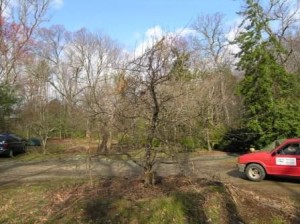Spring has sprung.
The rains have come.
And my tree planting has just begun.
With 250 spruce seedlings in hand , when will my job be done?
Each year I order trees from the Virginia state nursery and plant as many trees as I can. I encourage my friends and neighbors to help and I give to my customers a tree or two. Some times I participate in an Arbor Day exercise with grade schools and offer the seedlings to students to take home to plant. I started doing this in 1986 and am a proud caretaker of a 30 foot tree my son planted when he was in the fourth grade. To me planting a tree is an act of kindness and is a way of paying forward to a clean and healthy environment for future generations.
